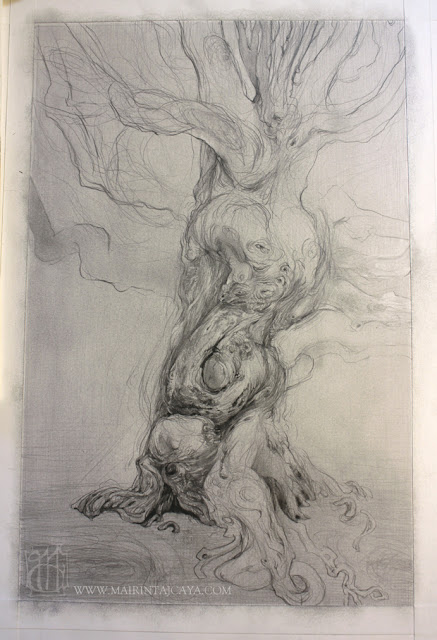The Infinity Tree continues!
{Review the dialogue for Tree Post I, II, and III here...}
"Harding...fervently believed that nature's beauties are unendingly abundant and infinitely various", writes a contemporary critic - George Landow - of the master and drawing companion to John Ruskin, J. D. Harding.
He passionately advocated for the truth in representational, 'high' art of the natural world, through as unburdened an observation as possible.
{Review the dialogue for Tree Post I, II, and III here...}
"Harding...fervently believed that nature's beauties are unendingly abundant and infinitely various", writes a contemporary critic - George Landow - of the master and drawing companion to John Ruskin, J. D. Harding.
He passionately advocated for the truth in representational, 'high' art of the natural world, through as unburdened an observation as possible.
 |
| Purchase on amazon.com |
Harding instructs us to "produce as near a likeness to Nature, in every respect, as the instrument, or material employed, will admit of; not so much by bona fide imitation, as by reviving in the mind those ideas which are awakened by a contemplation of Nature.... The renewal of those feelings constitutes the true purpose of Art".
His protégé John Ruskin established clearer guidance on the same philosophy, observing "nature contrives never to repeat herself", perceiving that "there is indeed in nature variety in all things", declaring that:
"The truths of nature are one eternal change — one infinite variety...there is not one of her [Nature's] shadows, tints, or lines that is not in a state of perpetual variation: I do not mean in time, but in space. There is not a leaf in the world which has the same color visible over its whole surface".
"Nothing can be natural which is monotonous; nothing true which tells only one story...", says Ruskin.
Keep building and finding growth patterns in varied iterations:
And do not forget the rules of trees, integral to creating a believable tree-being instead of an oddly wonky figure that defies natural tree growth and all the laws of physics.
Trees are fractal in nature, so that patterns of form growth in the larger parts of the tree will be repeated and extended into the smaller scale parts of the tree.
Leonardo Da Vinci, the great Renaissance man the Arts reference so frequently, explained this aspect of tree rule as "all the branches of a tree at every stage of its height when put together are equal in thickness to the trunk".
End of part IV.
-Mairin-Taj
And so I begin the toned ground and under-drawing search for inner form structure of "The Infinity Tree", keeping the goal of believable representation balanced with evocative breathability of being within my mind's eye...
His protégé John Ruskin established clearer guidance on the same philosophy, observing "nature contrives never to repeat herself", perceiving that "there is indeed in nature variety in all things", declaring that:
"The truths of nature are one eternal change — one infinite variety...there is not one of her [Nature's] shadows, tints, or lines that is not in a state of perpetual variation: I do not mean in time, but in space. There is not a leaf in the world which has the same color visible over its whole surface".
"Nothing can be natural which is monotonous; nothing true which tells only one story...", says Ruskin.
Which of course leads us to mark-making variation and the variety imbued to the subjects of the image.
Keep building and finding growth patterns in varied iterations:
And do not forget the rules of trees, integral to creating a believable tree-being instead of an oddly wonky figure that defies natural tree growth and all the laws of physics.
Trees are fractal in nature, so that patterns of form growth in the larger parts of the tree will be repeated and extended into the smaller scale parts of the tree.
Leonardo Da Vinci, the great Renaissance man the Arts reference so frequently, explained this aspect of tree rule as "all the branches of a tree at every stage of its height when put together are equal in thickness to the trunk".
The rule for tree growth is explained by both hydrological and structural theories, meaning that the forces for efficient sap flow and design for stress resistance and integrity define the tree's growth.
Form follows function.
Form follows function.
Here's a comparison between before and after preliminary rendering on a few root structures:
 |
| the larger forms put down provisionally... |
 |
| finding the finer forms within the larger forms to further define the roots... |
End of part IV.
Part V will continue this drawing stage breakdown with further examination of the art world's wisdom for trees, visual truth, fantastical philosophy, and technical execution, with the final "Infinity Tree" drawing reveal.
-Mairin-Taj






No comments:
Post a Comment